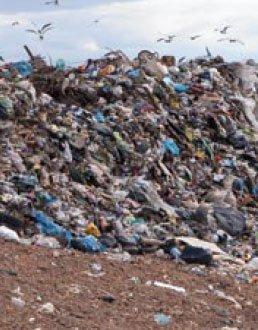Too Much Waste Costing Too Much Money: It’s Time for Product Stewardship
Heidi Sanborn is executive director of the California Product Stewardship Council (CPSC) and can be reached at heidi@CalPSC.org. For more information about CPSC, visit www.calPSC.org.
Twenty years ago, California passed AB 939 (Chapter 1095, Statutes of 1989), a groundbreaking law that made local governments responsible for reducing waste. The goal was to achieve a waste diversion rate of 50 percent by 2000, and AB 939 imposed a fine of $10,000 per day for noncompliance.
While working to achieve AB 939’s goals, local governments discovered two things: Recycling programs have not succeeded in reducing the amount of waste generated or sent to landfills, and the costs of managing waste far outstrip their budgets.
A new policy approach called extended producer responsibility (EPR), also known as product stewardship, aims to reduce waste at the source by encouraging better product and packaging design. EPR places primary responsibility with producers and manufacturers, because only they can change product design and incorporate recycling costs into the price of the products.
Local government responded valiantly to AB 939 by implementing new collection and recycling programs, building infrastructure and educating the public. This resulted in huge increases in costs and recycling rates. However, the amount of waste disposed today remains the same as it was in 1990 — 40 million tons per year — because waste generation continues to increase. To make matters worse, products are often designed to be disposable instead of recyclable or repairable — and they’re over-packaged. More products than ever contain toxins, such as mercury in fluorescent lighting, making their disposal extremely expensive to manage.
In fact, the cost to manage these waste streams is staggering. San Luis Obispo County estimates that its Household Hazardous Waste (HHW) budget would have to increase to $4 million annually to manage all of the batteries and fluorescent lights disposed of locally each year. According to Rob D’Arcy, hazardous materials program manager of Santa Clara County, the county spent $2.9 million to manage the hazardous waste collected from just 5 percent of its households in fiscal year 2007–08. This begs the question: Where is the other 95 percent of HHW going? Quite possibly into the landfill, making it a long-term liability for the county. In short, local governments are paying extraordinarily high costs to manage small percentages of HHW. San Luis Obispo and Santa Clara counties are not anomalies. This is a scenario repeated throughout California.
The current cradle-to-grave system gives producers no feedback on end-of-life costs. A cradle-to-cradle system is needed where producers are part of the end-of-life management system and receive the right market signals to drive design changes. In 2006, with help from the Product Policy Institute, local governments formed the California Product Stewardship Council (CPSC), a coalition of local governments, business partners and other stakeholders working to support the transition to producer responsibility. CPSC is supported by local governments from rural Del Norte County to urban Santa Clara County and cities including Los Angeles and San Francisco (for a complete list, visit www.calpsc.org/about/associate_jurisdictions.html).
While some companies are doing a great job with eco-design and take-back programs, most companies are not voluntarily taking responsibility for their products and have stated firmly that they oppose any EPR policy. Therefore, the California Integrated Waste Management Board (CIWMB) needs authority to require EPR for products that are problematic. In January 2008, CIWMB adopted an EPR policy framework that provides a basis for EPR legislation. Rather than implementing separate laws to mandate recycling programs for individual products, the state will use a framework that addresses a wide range of products. This policy provides a holistic approach to managing product waste but still allows flexibility for individual producers to develop take-back plans.
CPSC is calling attention to these issues and creating dialogues between elected officials, businesses and other stakeholders to address concerns and find workable solutions. In 2008, CPSC successfully cosponsored AB 2347 (Chapter 572, Statutes of 2008), which created a producer take-back program for mercury thermostats. The bill was supported by the California Retailers Association and by thermostat producer Honeywell. EPR legislation creates a level playing field by holding all producers to the same standards of accountability, eliminating any competitive disadvantage currently experienced by companies that voluntarily take back their products.
While AB 939 did a lot of things right, it placed the sole responsibility on government to solve waste problems they didn’t create and can’t control. California needs legislation to ensure that all parties share responsibility for managing products at the end-of-life stage. This is the only way to cost-effectively manage waste, reduce government size, reduce the need for new landfills, reduce costs and send the correct market signals to producers.
For more information, visit the CPSC website at www.calPSC.org.
This article appears in the July 2009 issue of Western
City
Did you like what you read here? Subscribe to Western City

